Photo
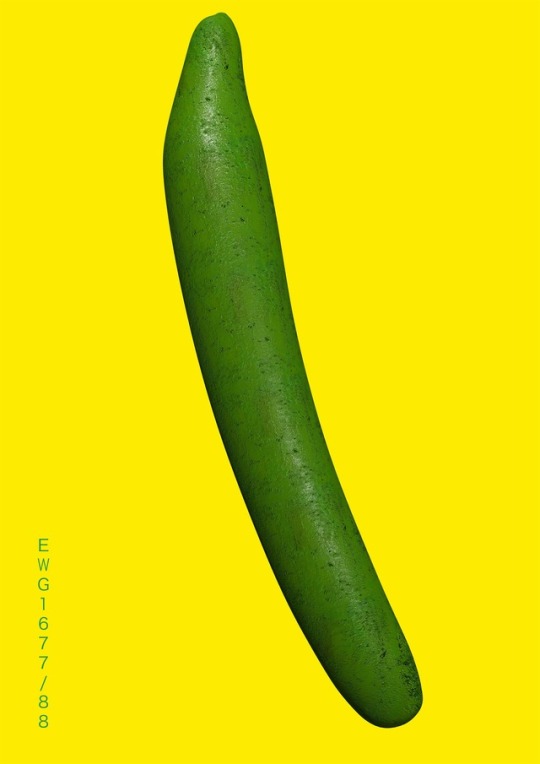
“EWG 1677/88”
digital-print, A0, 2017
The straightened domesticated cucumber as a symbol of economic and social aspirations for normalized conditions.
Regulation (No 1677/88 / EEC) was adopted in 1988. The European Commission suspended the 2009 regulation. In wholesale and retail, however, it is still practiced. Accordingly, cucumbers of the Extra and Class 1 were allowed to have a maximum curvature of ten millimeters by ten centimeters, and a maximum of twenty millimeters was permitted for Class 2. The cucumber of the extra class should be "practically straight", that of the commercial class 1 "pretty well shaped".
The cucumber as a sculptural object created by domestication. Without the cultivation of nature, it would not have been possible for man to become sedentary 10,000 years ago. In the cultivation of food, man found the security he needed to settle down.
6 notes
·
View notes
Photo








“I’m with artist”
performance in public, installation, photography series, digital-print, Venice Biennale 2017
References:
Keith Arnatt / Tate
Joseph Beuys / Monopol
#fddoh#imwithartist#imwithart#imwithher#imwithyou#imwithstupid#venice#biennial2017#performance#keith arnatt#joseph beuys#anne imhof faust#anne imhof#erwin wurm
0 notes
Photo

SOTR_OOO,
SLEEPING_ON_THE_ROOFTOP , digital-print, 80*125cm, 2017
In the performance series "sleeping on the rooftop", I try to question my own expectation and the associated habits in the context of urban living space. The elimination of prefabricated conventional routes such as roads and sidewalks makes the attempt to take the allegedly most direct route across houses, roofs, residential blocks and construction sites. Based on the so called „Parkour" created in the 1980s in France. The naming sleeping on roofs is the central element of the performances. It calls for a nomadic, temporary attitude that stands in contrast to the domesticated way of life in the supposedly dynamic urban space. Naive infantile attempt at conventional liberation or a consistent emancipation of the petty_bourgeois attitude resulting from urban life, which downright, through all social strata, takes on reactionary features?
4 notes
·
View notes
Photo
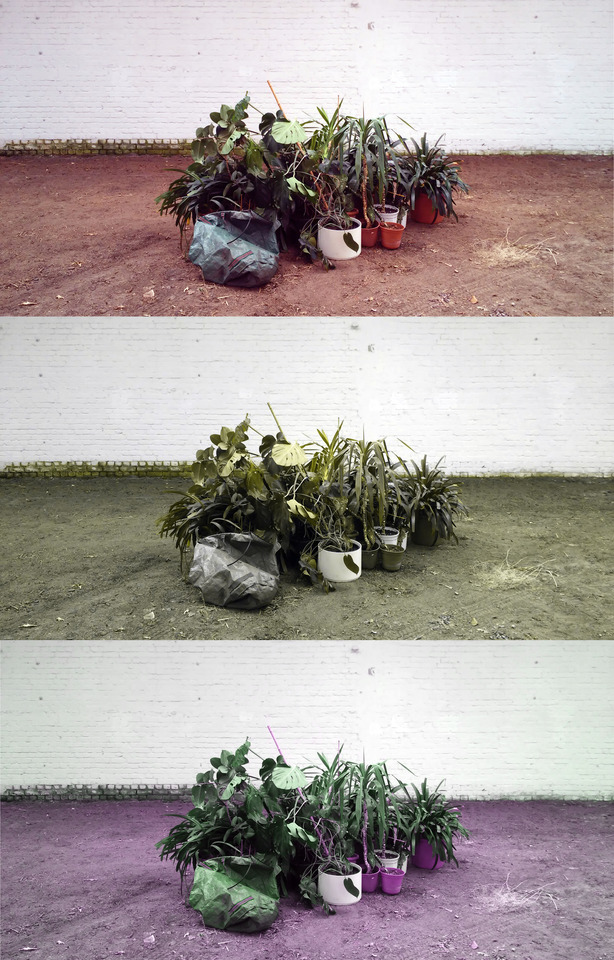

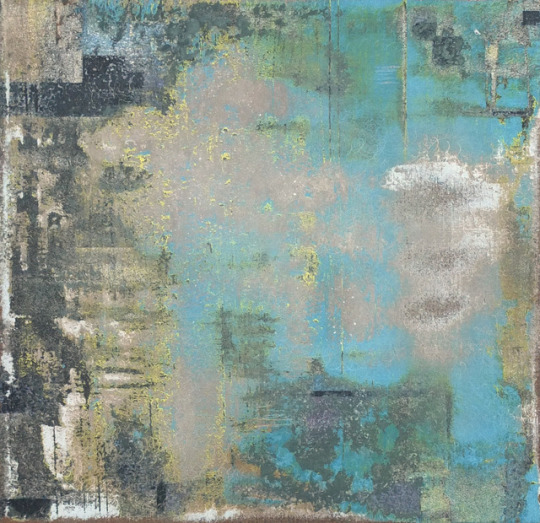
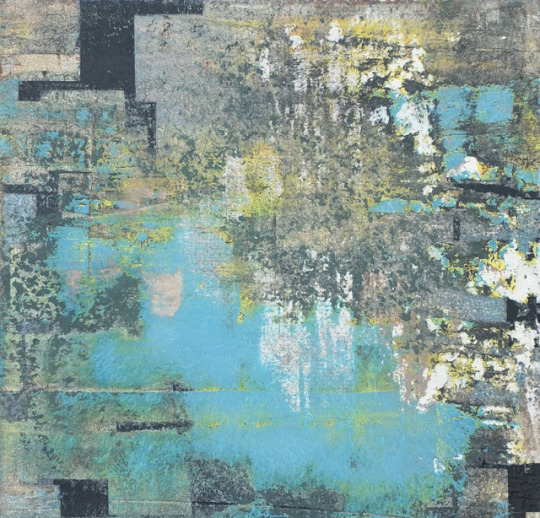

lung, photography, digital print, 80*125 cm, 2017
untitled, 2-component fillers, Plywood board, acrylic paint, spray can, painting series, 2014
1 note
·
View note
Photo
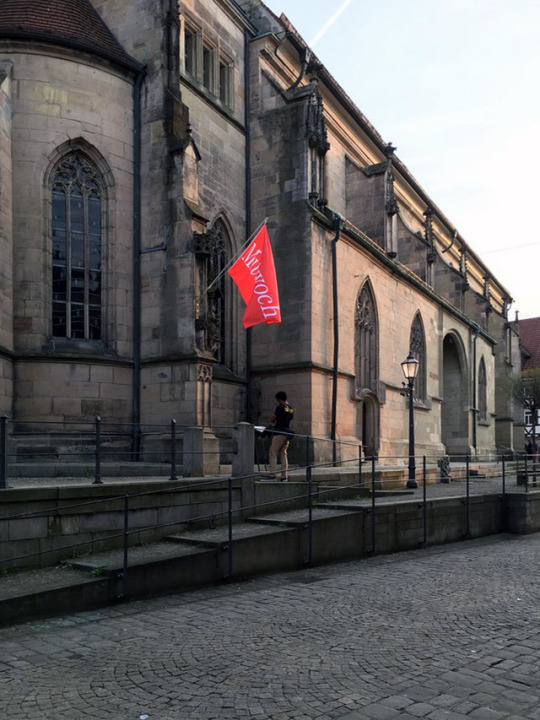
MITTWOCH Sculpture in public, 300*300 cm, red flag, rod, 2016
“The work of fddoh, designed as a red flag, certainly belongs to the most difficult to interpret works of the project. You have to know a little about what the artist has been thinking about in order to follow the work „Mittwoch“. In the foreground is the medium of the flag, which actually has its place in secular places and buildings. Flags are primarily political messages, identity and affiliation, orientation and labeling. The fiery red thus gives the empty niche something of the waning dynamism of the political and revolutionary, which is also anchored in the history of Christianity, especially in the Reformation period and its effects, which are still effective today. The inscription “Mittwoch” (“Wednesday”), which appears at first completely utterly remote and arbitrary, explains the artist on the basis of the cultural development lines: Like all the days of the week, Wednesday was named after an ancient deity, Mercury, the god of commerce and communication, and for centuries has been of a deeper cultic and symbolic importance for mankind. The flag and inscription are not as profane as they are initially thought. In them, a very religious heritage is buried, wich - when it is unveiled and flutters in the familiar place - crosses through and questions Superficial conceptual patterns and visual habits. With a humorous wink, the sculpture places the confidant and the supposed stranger alike at the disposition. What is sacred to us according to which we live, what we orientate, what we gather together, and what we believe in; all this is often much more ambiguous and confused than we think and deeply interwoven in the shallows of our cultural origins. Thinking about himself and his own roots is the appeal that the artist ignites here with subtle remedies”.
Dr. Peter Schüz / 2017
1 note
·
View note
Photo

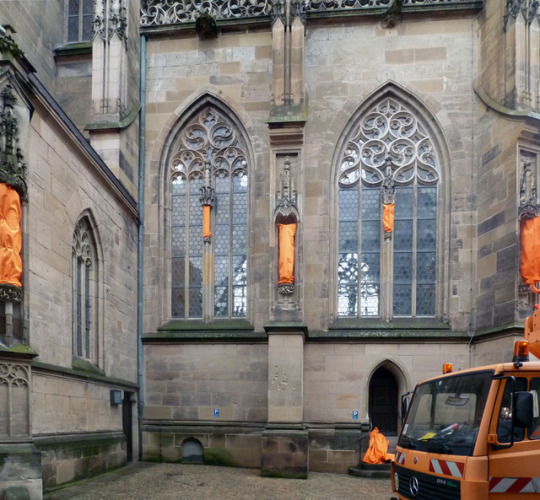
MITTWOCH Sculpture in public, 300*300 cm, red flag, rod, 2016
“Mittwoch” eng. Wednesday explores the architectural-sculptural aspects of the church building in connection with art and examines the extent to which church history in its controversy can be a model or a stimulus for current social crises. I am interested in the question of the extent to which an allegedly “profane” day of the week, because of its historical origin, allows us to question the current perspectives.
The concept of revolution, which is the abrupt structural change usually brought about by force, is opposed to that of the Reformation. We are surrounded by historical knowledge, which is apparently no longer accessible, almost forgotten, and still determines our everyday life. A daily example in our globalized world is the seven-day week. The definition of a seven-day rhythm as well as the naming of the individual days can be traced back to the Babylonian week, which in turn builds on knowledge of the Sumerians.
The days of the week were named after the visible stars of the geocentric worldscape (sun, moon, Mars, Mercury, Jupiter, Venus, Saturn) and worshiped at the time of naming as gods themselves. These names as well as the divine faith were adopted by the Greeks and Romans. In the fourth century, the Germans also took over this system and replaced the Roman divine names with their own. In the course of Christianization, attempts were made at a later date to repress these pagan names, but this was achieved only in the German-speaking world on Wednesday (ger. Mittwoch) and Saturday (ger. Samstag). Wednesday, the day of Mercury (latin Mercury, french mercredi, italian mercoledì, spanish miércoles), which was equated with the Germanic god Wodan (Odin). Wednesday (nl. Woensdag), with the German Mittwoch returning to the Roman Catholic influence.
The flag is a symbol of community in the traditional sense. As a tribal or token, flags have been known in the Orient since ancient antiquity. There they serve as a point of reference for soldiers and troops in battle. Today, the flag is a distinctive identifyer that is particularly relevant to nations. In a time of growing nationalism and fanaticism throughout the world, national as well as religious symbols are very popular. Abuse of power in the form of a rejection of different wisdom and thinking was and is a feature of religious, political, national or social associations and ultimately serves the purpose of consolidation. Perhaps this is also anchored in social homophilia (“Birds of a feather flock together.), wich is a human trait. This trait looks at a rapidly developing society and the accompanying globalization. The media is not the only source to observe that communities show unity under leadership of a flag.
The principle of subsidiarity, inspired by the Reformation, offers the means of mediating between small groups, from families to clubs to large communities (such as the European Union). This principle fails when the ideology of a community is understood as doctrine. The view of black and white, which often arises during holistic explanatory experiments seems to be rooted within us and is brought into focus through the absurdity of indwelling in the Mittwoch flag.
Reformers such as Zwingli and Calvin rejected the images as idolatry, citing on the Ten Commandments. Their interpretation of the second commandment essentially describes the unavailability of God. They feared that the images would replace God. One could understand the use of the flag in a transcendental sense as “idol worship,” it symbolizes the multitude of secular things which are supposed to serve as faith mediators, but which, under the Reformation, thwart the opening to true faith. Here one can look at the history of art, be closely interwoven with biblical narratives and church construction, a connection that has almost completely been replaced by the art market in contemporary art.
1 note
·
View note
Photo



“79kg_273m_asphalt”
2-component fillers, acrylic paint, spray can, Plywood board /
performance, painting / 198cm x 129cm / 2014 ongoing
The performance includes the direct grinding of the image on the road surface. This results in the characteristic wear and tear. The picture is coupled with a towing cable to a car and pulled over the asphalt, by my body weight as part of the surfing the wear is strengthened.
“The pictures by fddoh reject traditional methods in their production: Oil paint, canvas. On the other hand, he uses putties, varnishes, plywood boards. During the working process, a fast curing results in a time pressure, which excludes time-intensive composition or multiple reworking. The pictures are thrown into the world, dragged, pushed. Raw and roughly treated they experience their completion. Andreas Schmidt questions himself on the experience saturation of a centuries- old culture tradition. In his work he is looking for a way to direct social relevance.”
Christian Gögger, Esslingen am Neckar, 2015
0 notes
Photo
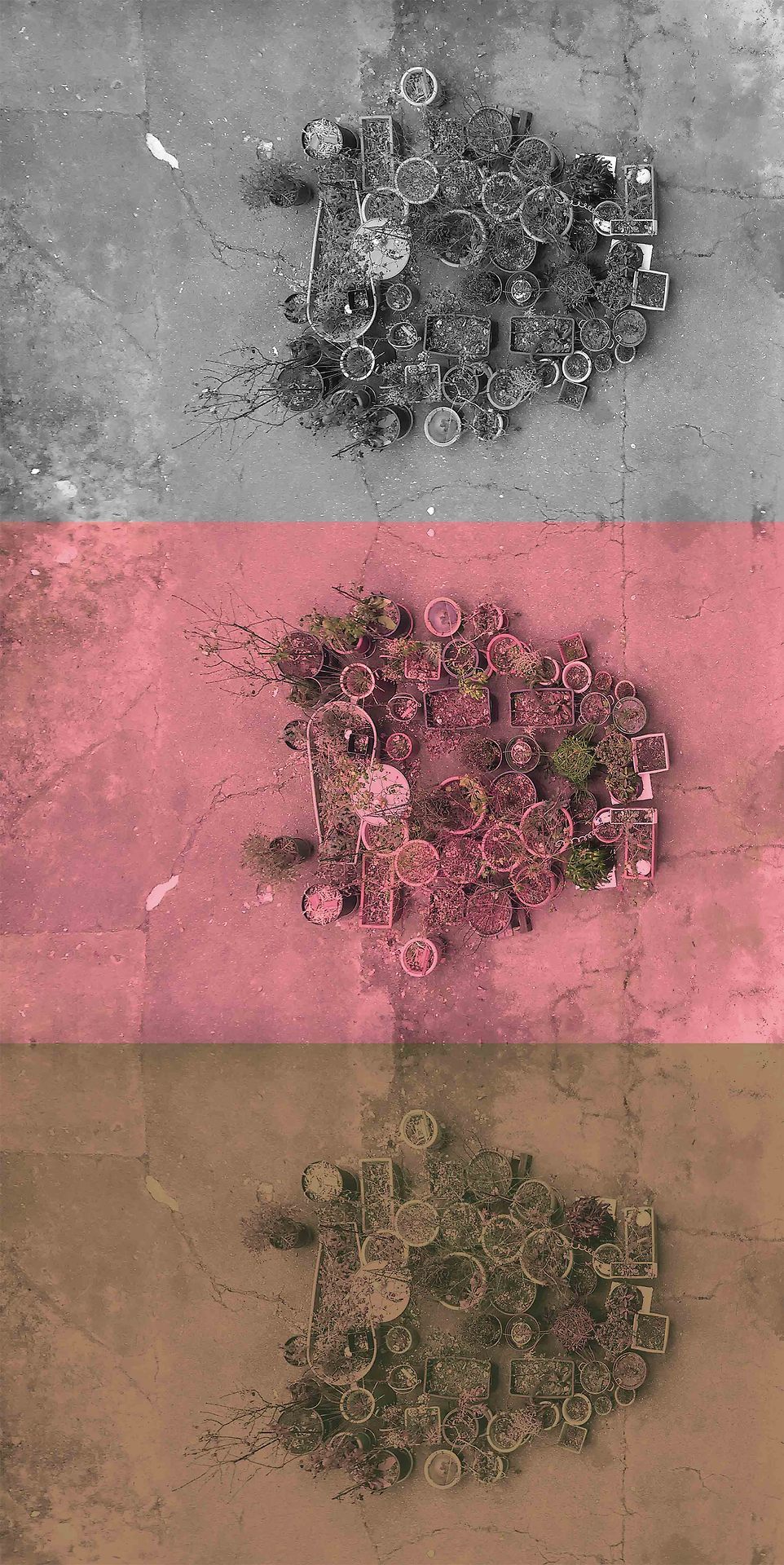
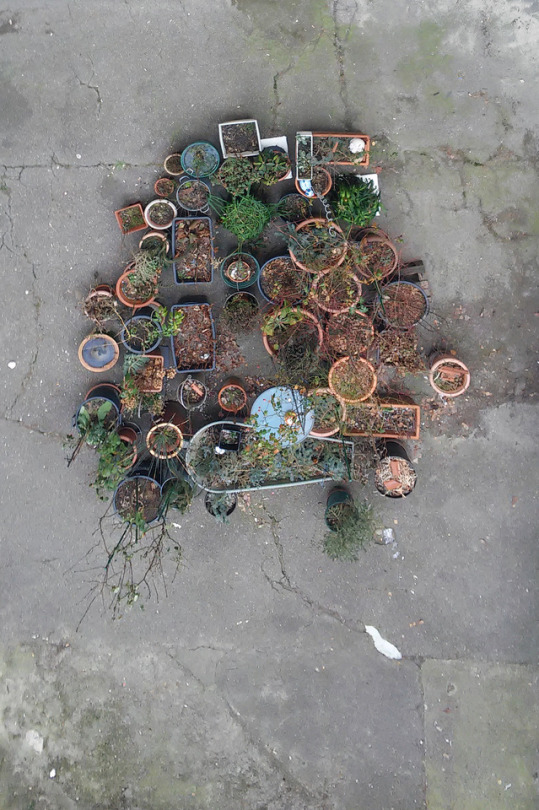
birds_of_a_feather / digital-print / photography / 160cm x 80cm / 2017
assortative mixing / digital-print / photography / 160cm x 106.5cm / 2016
The photograph was created in connection with the performance series “sleeping on the rooftop”.
2 notes
·
View notes
Photo



SHARING_IS_CARING sculpture/mobile, 150*100 cm, car opening tools, car lacquer, 2017
0 notes
Photo

MORTALITY
Musical composition, audio, Digital graphic series, digital-print, 2015/16 ongoing
The Mortality project is a musical composition based on mortality rates. Twenty-three different mortality rates are used as the basis for the composition. A metronome was generated from each mortality rate. In the form of global mortality, this results in a rhythm with an interval length of 0.562 seconds.
By superimposing the 23 metronomes, a chaotic pattern of rhythms evokes the sound of a geiger counter.
listening example:
https://soundcloud.com/fddoh/sample
In my discussion with the sound scheme, it is my interest to produce an audible breakdown of the 23 overlapping metronomes. The condition was both the preservation of all occurring signals as well as a musical access to the topic and the origin of the intervals. The base for this is laid by a marching drum as known from processions or parades. This makes it possible to use all signals as part of the drum vortex without exception. The basic mood of the piece moves between resistance and acceptance. The rhythmic misalignment of all soundtracks is constantly pressing on and still acts as a harmony-enhancing constant.
listening example:
https://soundcloud.com/fddoh/mortality-1
Based on the image of the composition oscillation, a digital graphics series has emerged. The minimalistic structure of the individual graphics takes up the aspects of the music piece in their static appearance and simultaneous tornness, translating it into a visual form.
My thought is not founded on the fear of one’s own transience, but rather on the awe of our lives. The cycle of life appears monstrous and is hardly imaginable for the individual. Therefore I selected the 23 mortality rates witch are of cause based on my approach to generate a rhythmic pattern that should be seen as an excerpt of the inconceivable mass of individual fates. Nevertheless, we try to give a tangible figure with statistical surveys of the multitude of events, but only the abstraction remains for something we want to understand as a whole. At this point I want to investigate the interaction between our rational and emotional perception. Can emotions function as a tool, to gain access to rational thoughts without being stopped by their incomprehensible figure (The inconceivably of individual transience or even more abstracted in mortality rates.)?
0 notes
Photo

“untitled”
2-component fillers, Plywood board, acrylic paint, spray can, painting, 25*25 cm, 2014
0 notes
Photo
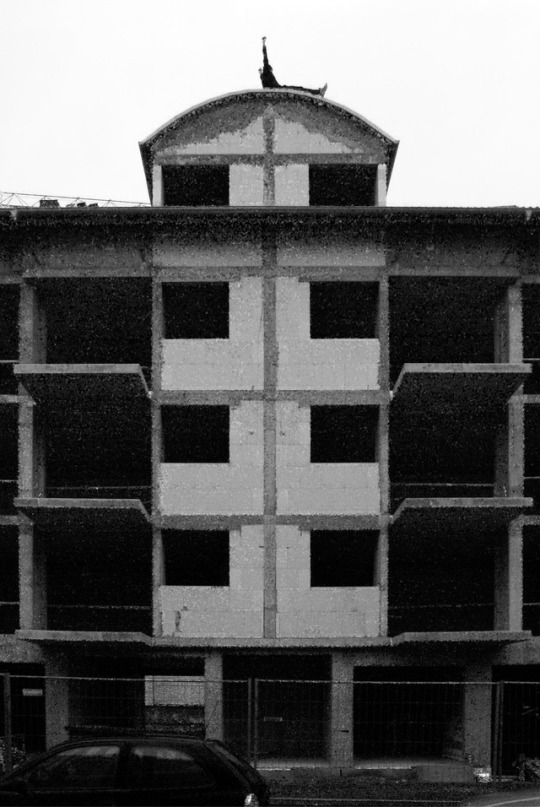
SLEEPING_ON_THE_ROOFTOP performance in public, video, photography series, digital-print, various roofs, various construction sites, 2010 ongoing
2 notes
·
View notes
Photo

“DADA_ENGINE”
new media art piece, code artwork / 2016 ongoing
https://vimeo.com/fddoh/dada
The DADA_ENGINE is a Java-based search engine that I have developed. State-of-the-art search engines like Google and Yahoo etc. provide the user with the possibility to write the desired search term into an input field and within a fraction of a second the user has tens of thousands of search results available. These results are in turn listed according to ranking and economic relevance.
The DADA_Engine on the other hand, does not require an external Input but randomly generates an entry from within the program. The Engine endlessly displays the alphabet as a purely random string. At the same time, it scans the letter sequence to be output for certain words. In the case that the random output produces an Intelligible expression, the program delivers the found word by an electronically generated voice.
0 notes
Photo





“untitled”
150 *150 *8 cm, relief, sculptur, 2-component fillers, Plywood board, chrome paint, 2014
0 notes
Photo
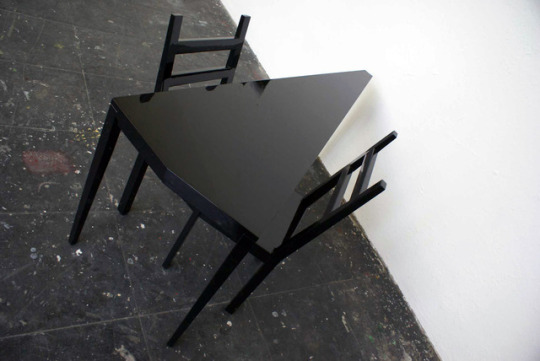
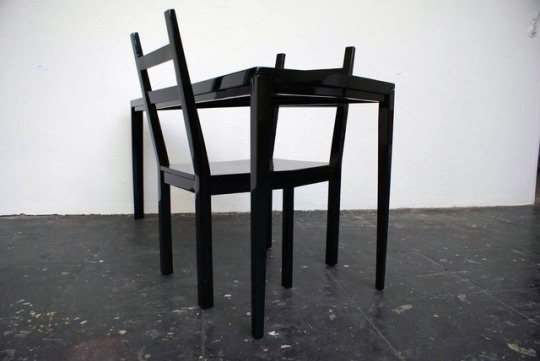
“mirror”
120*100*80 cm, sculpture, wood, piano lacquer, 2007
in cooperation with Nils Christensen
1 note
·
View note
Photo









SLEEPING_ON_THE_ROOFTOP
performance in public, video, photography series, digital print, various roofs, various construction sites, 2010 ongoing
https://vimeo.com/fddoh/sleep
lean back lean back lean back lean back lean back lean back lean back lean back lean back lean back lean back lean back lean back lean back lean back lean back lean back lean back lean back lean back lean back lean back lean back lean back lean back lean back lean back lean back lean back lean back lean back lean back lean back lean back lean back lean back lean back lean back lean back lean back lean back lean back lean back lean back lean back lean back lean back lean back lean back lean back lean back lean back lean back lean back lean back lean back lean back lean back lean back lean back lean back lean back lean back lean back lean back lean back lean back lean back lean back lean back lean back lean back lean back lean back lean back lean back lean back lean back lean back lean back lean back lean back lean back lean back lean back lean back lean back lean back lean back lean back lean back lean back lean back lean back lean back lean back lean back lean back lean back lean back lean back lean back lean back lean back lean back lean back lean back lean back lean back lean back lean back lean back lean back lean back lean back lean back lean back lean back lean back lean back lean back lean back lean back lean back lean back lean back lean back lean back lean back lean back lean back lean back lean back lean back lean back
0 notes



